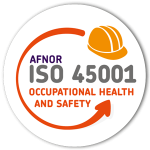Safety First: Essential Safety Measures for Drilling Rig Workers
Drilling rig operations are among the most demanding and high-risk activities in the industrial sector, particularly in oil and gas exploration. Working on a drilling rig, whether onshore or offshore, exposes workers to a variety of hazards, including high-pressure systems, heavy machinery, elevated platforms, and harsh environmental conditions. With these inherent risks, prioritizing safety is crucial to protect workers and prevent accidents.
In this blog, we’ll explore essential safety measures for drilling rig workers to ensure a safer work environment, minimize risk, and promote a culture of safety on-site.
1. Comprehensive Safety Training
One of the most effective ways to enhance safety on a drilling rig is through rigorous training programs. Workers must undergo comprehensive training covering the following areas:
Regular refresher courses are equally important to ensure workers remain up-to-date with safety protocols and industry regulations.
2. Personal Protective Equipment (PPE)
Wearing the right personal protective equipment (PPE) is critical in protecting workers from injuries. Common PPE for drilling rig workers includes:
Ensuring that all PPE is well-maintained and worn correctly is a critical aspect of drilling rig safety.
3. Rig Equipment Maintenance and Inspection
Proper maintenance of drilling rigs and associated equipment is key to preventing mechanical failures that could lead to accidents. Regular inspection of drilling systems, including hoisting equipment, pumps, and pipes, helps identify potential issues before they escalate into safety hazards. Key steps include:
These proactive steps are vital in maintaining operational efficiency and protecting workers.
4. Hazardous Material Management
Drilling operations often involve handling hazardous materials such as fuel, lubricants, and chemicals. Proper management of these materials is essential to prevent spills, fires, or exposure risks. Key safety practices include:
By effectively managing hazardous materials, companies can safeguard both their workers and the surrounding environment.
5. Fall Protection Systems
Drilling rigs often require workers to operate at elevated heights, increasing the risk of falls. A fall from even a modest height can result in severe injury or death. To mitigate this risk, implementing fall protection systems is essential. Safety measures include:
These systems create a safer work environment, especially in high-risk areas of the rig.
6. Blowout Prevention and Control
Blowouts, or uncontrolled releases of oil, gas, or other well fluids, pose one of the most significant hazards in drilling operations. To control and prevent blowouts, rigs are equipped with blowout preventers (BOPs). Safety protocols related to blowout prevention include:
Having a robust blowout prevention plan in place significantly reduces the risk of catastrophic incidents on a rig.
7. Fire and Explosion Prevention
Drilling rigs are high-risk environments for fires and explosions due to the presence of flammable gases and liquids. Key fire prevention measures include:
By actively controlling fire risks, companies can create a safer working environment for their crews.
8. Clear Communication and Signage
Effective communication is essential to ensuring that safety measures are understood and followed. Implementing clear communication channels helps workers stay informed about potential hazards, emergencies, and daily operational protocols. Key strategies include:
By fostering open communication, safety awareness can become an integral part of daily operations.
Conclusion
The nature of drilling rig operations means that safety must always come first. Implementing robust safety measures, from comprehensive training programs to fall protection and blowout prevention, is essential for protecting workers and ensuring the smooth running of operations. By prioritizing these essential safety measures, companies can create a safer working environment, reduce accident rates, and foster a strong safety culture among their workforce.
For advanced safety solutions tailored to your specific drilling needs, consider reaching out to Al Abrag Trading Est., specialists in providing high-quality drilling services and safety systems. Their expertise ensures that your operations are both efficient and compliant with the highest safety standards, safeguarding your crew and assets.



